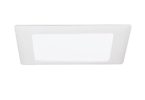Between 1455 and 1485, the houses of York and Lancaster fought in a series of dynastic civil wars to gain the throne of England. These battles later became known as the War of the Roses because the two rivals were known as the red rose (Lancaster) and the white rose (York). For the past five years, Home Depot and Lowe’s have been engaged in a rivalry that is now being referred to as a new War of the Roses. Only this time, the prize for winning is merely a larger portion of the multi-billions of dollars generated by customers who buy flowers and gardening accessories.
It may seem strange that these two home improvement megastores would be that interested in cornering the market on lawn and garden products. After all, it’s considered to be a rather small segment of the retailing industry’s market. However, a wide variety of large and small retailers heavily depend on the lawn and garden products to attract customers to their stores during the warmer spring months. Basically, the live plants and trees are used to bait customers into buying more products, such as garden gloves, watering hoses, and potting soil. For Home Depot and Lowe’s, the customers are baited into purchasing materials and other supplies for various spring home improvement projects. The majority of home improvements are made during the warmer spring months, which makes spring the peak selling season for these types of stores. So it’s vital for Home Depot and Lowe’s to attract as many customers as possible.
Home Depot’s strategy vs. Lowe’s strategy
The battle strategies being used by Home Depot and Lowe’s to recapture American consumers are similar in some ways, but different in other ways. They are both basically using the same weapons. Both stores prominently place beautiful, fragrant flowers indoors and outdoors, with all the lawn care and gardening supplies nearby. They place gardening books, guides and magazines close to the checkout counters in case you missed them while shopping for your plants, hoses, potting soil, and fertilizer. Of course, the outdoor areas are also used to prominently display patio furniture, gardening tools, riding lawnmowers, water fountains, and barbecue grills. They also display other merchandise in ways that appeal to the consumer’s desires to be having outdoor fun and relaxation.
Numerous other businesses and their employees have also become involved in this new War of the Roses, including weather forecasters. Retailers employ weather forecasters to help plan their spring plant rollouts. Each rollout is timed throughout various parts of the country so the plants will look their best and survive better. Private growers, large nurseries, and professional horticulturalists are also utilized by these megastore retailers.
Both home improvement stores purchase exclusive reselling rights for specially bred, scientifically engineered plants, such as the SunPatiens and Calliope Hybrid Geraniums. Home Depot purchased the SunPatiens exclusive rights in 2006 from a Japanese breeder named Sakata Seed. There was 6 million of this breed of impatiens sold in the U.S. before the resell rights became available to other retailers in 2009. Although Syngeta, the Swiss plant breeder who developed the Calliope Hybrid Geraniums, didn’t sell exclusive rights to any retailers, Home Depot rebranded the cuttings they purchased. They then claimed their version of the plant was exclusive due to the name they gave it.
The main differences between Home Depot’s and Lowe’s battle strategies are the ways they go about selecting what plants to offer consumers. Home Depot mainly offers plants that they have purchased from about 100 large growers from across the United States. Like Lowe’s, Home Depot utilizes focus groups visiting certain greenhouses to determine which plants are more popular. They also conduct testing to ensure the plants are sturdy enough to survive various climates and soil conditions. On the other hand, Lowe’s carefully examines a thousand flower varieties every year. They then pick a few dozen to test for 3-4 years. During the arduous, testing, Lowe’s narrows their selection down to just 10 varieties that eventually are sold under its exclusive brand, Garden Club Select.
Benefits to consumers
Although it may seem these retailers are taking unfair advantage of the consumers’ emotions, consumers do benefit too. It’s easy to forget some essential item when you’re out shopping, so it’s good to have some reminders available. It also saves the customer time when everything that is needed to complete a project is conveniently located in one area of the store. Consumers also get a better quality and variety of plants and accessories. The plants are more vibrantly colored, more fragrant, sturdier, and higher-yielding now and more time-saving tools and gardening books are being produced. Customers can have healthier lawns and gardens thanks to Home Depot and Lowe’s having their own War of the Roses.
Tags: sunpatiens lowes, lowes roses, lowes vs home depot plants, home depot/lowes rivalry, lowes or home depot garden hose, home depot or lowes for plants, plant deals lowes home depot, lowes roses.
Related Posts
<>







